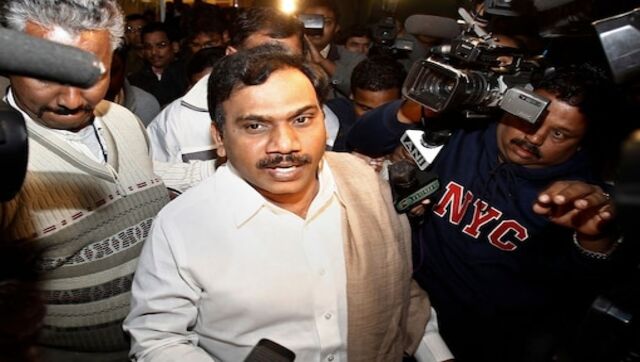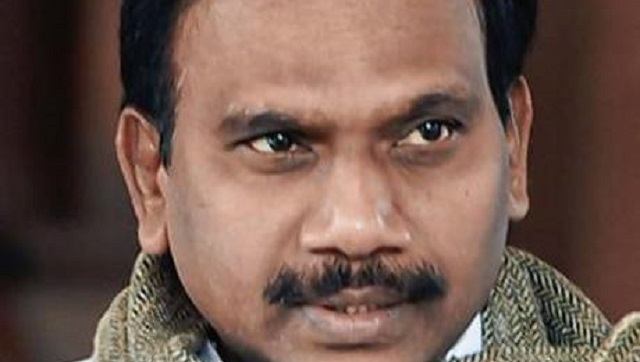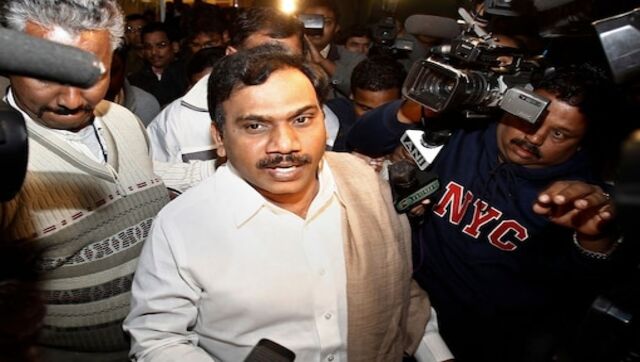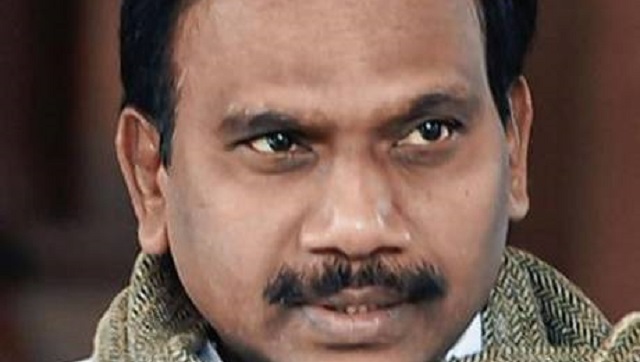By Aditi Roy Ghatak and Paranjoy Guha Thakurta
The spectrum scam neither started with A Raja, nor, for that matter, when the BJP-led NDA government was in power, as is often alleged by the Congress. Spectrum has been misallocated and undervalued ever since the government gave up its monopoly over the country’s airwaves in 1994 when Sukh Ram was Communications Minister.
The untold story of the history of India’s spectrum scandal is being revealed here for the first time after four months of investigation into old records and dozens of off-the-record interviews with experts who disclosed how phrases like ‘cumulative maximum’ were deliberately used to interpret complex rules, thereby depriving the exchequer of its dues.
________________________________________________________
Technology has a curious way of rendering even popular and often wise English expressions redundant. Whoever said that money could not be made ‘out of thin air’ was mistaken. India has just shown that not only can humongous sums be made out of thin air. Indian ingenuity has accomplished what is arguably the world’s largest ever reported financial scam ‘out of thin air’, in this instance, a close to $40 billion scam relating to misallocation and undervaluation of second-generation or 2G electromagnetic spectrum used mainly for mobile telecommunications.
Whereas the 2G scam has hogged the headlines, there is a strongly suspected but uninvestigated case of ‘stolen’ spectrum, for want of a better word, which started in 1994 when the government of India gave up its monopoly over the telecom sector. So effectively have the tracks been covered that not even seasoned telecom experts with no vested interests sense the possibility of a scam while others dismiss it as ridiculous.
Thus, contrary to questioning the need for placing licences of 1994 vintage under judicial scrutiny on grounds that they have no relevance to the Supreme Court’s February 2012 judgment cancelling 122 licences, the investigation conducted by the two journalists who have written this series of articles suggests that it would be an excellent idea to have the entire licence-spectrum regime of the last 18 years examined thoroughly so that those who have secured spectrum beyond their contractual obligations and possibly through malfeasance be brought to book.
One school of thought suggests that the companies that received extra spectrum only be asked to pay the appropriate price for a finite (and, therefore, scarce) natural resource that has turned them into multi-billionaires in a decade or so. Another view is that the letter and the spirit of the law demands that purloined resources be returned and letting those who misappropriated these resources get away by paying for what was not theirs to begin with, would be tantamount to standing the law on its head.
Spectrum, as every Indian knows, is an invaluable asset in today’s age of communications-driven growth. After the hullabaloo over the 2 February 2012 judgment of Supreme Court Justices GS Singhvi and AK Ganguly (now retired) settles down, the question that should exercise the mind of the interested Indian is how all this began in the first place and how come no one is talking about the roots of the phenomenon called ‘stolen’ spectrum.
Not that everyone is entirely ignorant; the government knows; members of the Joint Parliamentary Committee, set up to examine matters relating to ‘Allocation and Pricing of Telecom Licences and Spectrum’ during 1998, actually had a presentation made to them by the Department of Telecommunications (DoT) clearly suggesting the anomalies in the spectrum allocation, even though the presentation did not underscore this point of stolen spectrum and none of the MPs present asked pointed questions to the officials of the DoT.
To set the stage for this series, it may be worthwhile to revisit recent developments in the telecom space. The Indian telecommunications network currently has in excess of 900 million wireless connections and India has the world’s second largest telecom subscriber base - which is also the fastest growing market with between five million and 10 million additions to the SIM (or ‘subscriber identity module’) card base every month over the last year.
The private sector is at the commanding heights of this market with an 85 percent control, thanks to policies that have provided easy market access for telecom equipment and a regulatory framework that the government promised would be fair for the service providers and affordable for a wide cross-section of Indians.Yet, the government’s actions have been far from fair, irrespective of the party in power. The only Union Minister for Communications to have got seriously implicated in recent times is Andimuthu Raja, who has spent 15 months behind bars.
The important development in recent times is the sudden scramble to seek clarity on pricing of spectrum and allocation, especially after the Telecom Regulatory Authority of India (Trai) released a consultation paper on “Auction of Spectrum” on 7 March 2012.
A quick look at the questionnaire leaves an impression that Trai is inclined to accommodate the incumbent dominant operators at any cost by seemingly trying to develop some consensus on contentious issues through comments from industry associations and other stakeholders, overlooking well established-principles of “no loss to the exchequer” and raising eyebrows yet again on its ability to be an impartial regulator.
The Trai paper principally deals with the quantum of spectrum to be auctioned, liberalisation of spectrum (ie use of spectrum for any kind of service), refarming (or reallocation) of spectrum in the 800 Mhz (megahertz) and 900 Mhz bands, the structure of the auction, the spectrum block size, the eligibility criteria for participating in the auction, the reserve price, roll-out obligations, spectrum usage charges and spectrum trading.
The bigwigs of the telecom industry are worried that the government would go through with its proposal to charge a one-time fee for 2G spectrum given in excess of 4.4 Mhz. Therein lies the core of the unfolding scam that has been kept under wraps for nearly 18 years. What is the loss to the government? Who knows? All that one knows is that this is not a notional or a ‘presumptive’ loss (to use the terminology of the Comptroller and Auditor General of India). It is a phenomenon that has not been investigated but certainly deserves to be probed by an independent agency.
It is worthwhile visiting the National Telecom Policy (NTP) 1994 approved on 13 May that year, which ushered in the first phase of liberalisation. The NTP 1994, inviting private participation in the telecom space, was designed to achieve international standards in value-added services that had been opened up for private investment in July 1992 for the following: electronic mail; voice mail; data services; audio text services; video text services; video conferencing; radio paging; and cellular mobile telephony. For the first six of these services, companies registered in India were permitted to operate under licences issued on a non-exclusive basis.
Continues on the next page
The country was divided into 20 telecommunications circles for basic telephone services and 18 for mobile cellular services (excluding the four metropolitan areas, which had been opened up earlier in 1992) that were categorised on the basis of their revenue potential: A (high); B (moderate); C (low). A duopolistic structure was to be introduced with only one private company operating in competition with the government-owned DoT to provide basic telephone services.
Even before the bids were opened for the 21 telecom circles, the then Union Minister heading DoT, Sukh Ram, had said that he was expecting Rs 100,000 crore from them. Indeed, large numbers were being bandied about and The Economic Times reported (28 June 1995; Centre likely to reap bonanza from telecom) that ‘A’ category circles would receive bids of between $2 billion and $3 billion. Clearly the parties were expected to bid aggressively.
Interestingly, HFCL (Himachal Futuristic Corporation Limited), some of whose promoters based in Himachal Pradesh are widely believed to be close to Sukh Ram, put in a bid quoting about Rs 85,000 crore as licence fee, which could have serious financial implications for it as an investor. The escape route provided by Sukh Ram to the company was that the DoT restricted the number of licences that could be obtained by each bidder and also staggered the payment of the licence fee. But that’s another story.
Mobile telephone service started with the issue of eight licences for cellular mobile telephone services (CMTS) in the four metro cities of Delhi, Mumbai, Kolkata and Chennai to eight private companies in November 1994. Subsequently, 34 licences for 18 territorial telecom circles were also issued to 14 private companies between 1995 and 1998.
Under the NTP 1994, bids were invited for private investment in 1995 through a competitive process to introduce an additional basic service operator in each service area. The government decided that only one new entrant would be granted a licence in each service area for providing basic telephone service in competition with the DoT. Three rounds of tenders invited since January 1995 led to the signing of licences for six circles in 1997-98.
Since only a limited number of companies could be allowed to operate in the areas of radio paging and cellular mobile telephone service, the government wanted to grant licences on the basis of tendering with a set of pre-determined criteria for selection: company track record; technological compatibility; future usefulness of the technology being offered; protection of national security interests; ability to give the best quality of service to the consumer at the most competitive cost; and, of course, commercial terms for the DoT, in what is termed as a ‘beauty parade’ method for selecting bidders in industry lingo.
With basic services, the private entrants would be welcome to expand the telecommunication network provided they balanced their coverage between urban and rural areas. Basic operators were allowed to use wireless in local loop (WLL), a then new wireless technology, to offer last mile connectivity. Other conditions of operation included an agreed tariff and revenue-sharing arrangements, amongst other terms as applicable for other value-added services. Amidst such processes and controls started the spectrum giveaways.
That is the curious story that saw a certain amount of spectrum being officially sold or allotted but nearly double that spectrum being given away, way back in 1994-95 under Minister Sukh Ram. This is important because the same game goes on even today as the unfolding story will establish. Sukh Ram was minister in charge of DoT between 18 January 1993 and 16 May 1996. The 1994 files have apparently gone missing, it is alleged by knowledgeable sources. In any case, no one is actually looking for the documents. What was allotted to companies was a ‘cumulative maximum’ of 4.4 Mhz and 4.5 Mhz for state and the metro circles respectively; what was actually given was double the amount!
Bureaucratese in India follows its own lexicon. The phrase ‘cumulative maximum’ was obviously very carefully crafted by a pucca bureaucrat. Clearly, he meant to ensure that there was no way that maximum could be breached. Yet it was. The Mad Hatter’s Telecom Party had begun.
Here’s what a leading industry executive had to say. “Bharti Airtel does not hold airwaves beyond the contracted limit…Every bit ofspectrumthat we have is as per government policy… so there’s nothing like excess spectrum that we hold”, Deputy Group Chief Executive Officer and Managing Director of Bharti Enterprises Akhil Gupta was quoted as stating (Economic Times, 14 March 2012).
Not all telecom sector experts are in agreement with this view. Admittedly, terms such as ‘paired’ spectrum are commonplace today and one knows that spectrum is always paired for uplinking and downlinking. Therefore, it is being suggested by some that even the term ‘cumulative maximum’ referred to double the amount (for up- and down-links).
Others suggest that in the early days of the telecom sector opening up, when concepts such as paired spectrum were not commonplace, the bureaucrat drafting the policy used an unambiguous English phrase to emphasise that the amount of spectrum allotted was the maximum permissible. In other words, a cumulative maximum of 4.4 Mhz meant a 2.2 Mhz up-link and 2.2 Mhz down-link. What demands investigation is what the government actually meant by the phrase ‘cumulative maximum’ for if these two words are to be taken literally, it implies that there has been a massive breach of the letter as well as the spirit of the law.
(Tomorrow: Did the biggies get spectrum free?)


)




)
)
)
)
)
)